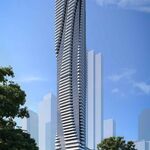afransen
Senior Member
While ULTra is pretty far removed from an ideal PRT system, it is encouraging to hear that the technology will have an opportunity to be proven in an urban application. Considering that 700 million people will be moving to cities in the next few decades, creating hundreds of new cities, it is important that we develop a range of transportation technologies that deliver a high level of service to compete with the car, while using much less energy and resources, and facilitating more pedestrian oriented development. For evidence of how things can go, look to the cities that China is throwing up, with 12 lane arterials all over the place, ringed by 3 or 4 highways.
Hopefully a successful urban application of this first generation of PRT technology can spur investment and development of more advanced systems.
Hopefully a successful urban application of this first generation of PRT technology can spur investment and development of more advanced systems.
London dream in Amritsar soon
Deepak Yadav, TNN, Jul 31, 2010, 05.00am IST
CHANDIGARH: The congested streets of Amritsar, each having a cultural and religious history, will soon be living anachronistically in the future as the city prepares to become only the second in the world after London to have an "ultra personal rapid transport (PRT) system" by 2012.
Imagine small travel capsules gliding on an elevated guideway over the claustrophobic Amritsar landscape, driven by none but highly intelligent computers, offering completely automated entry and exits, and of course uninterrupted mobility.
The dream project is expected to take off by January 2011 and will initially cover a distance of 7 kilometres. Clearance for the Rs 325-crore project was recently given at a meeting of Punjab Infrastructure Development Board (PIDB).
The proposal for developing a clean urban transport system for the city was submitted by M/s Fairwood India and ATS UK, and is to be developed under public-private partnership (PPP) format, funded through equity and debt in 50: 50 ratio.
The total track length would be 24 kilometres with eight stations and maximum trip time would not be more than five to eight minutes. Maximum speed the pods to be introduced will be around 30 km/hour. Officials claim the system is highly energy saving, silent in nature and totally pollution free.
Empty pods will wait off line at stations for passengers and ticketing would be automatic. The vehicles will also have facility to carry wheelchairs, shopping carts or push chairs. Officials said fare per passenger has been proposed at Rs 20.
Sukhbir Singh Sandhu, managing direction of PIDB, while talking to TOI said, "This is a private and innovative project and Punjab is lucky to be the second place after Heathrow international airport in London. The company studied Agra, Gurgaon and Amritsar after going through various aspects like traffic congestion and finally favoured Amritsar."
Read more: London dream in Amritsar soon - Chandigarh - City - The Times of India http://timesofindia.indiatimes.com/articleshow/6239630.cms?prtpage=1#ixzz0vwBHSL99





